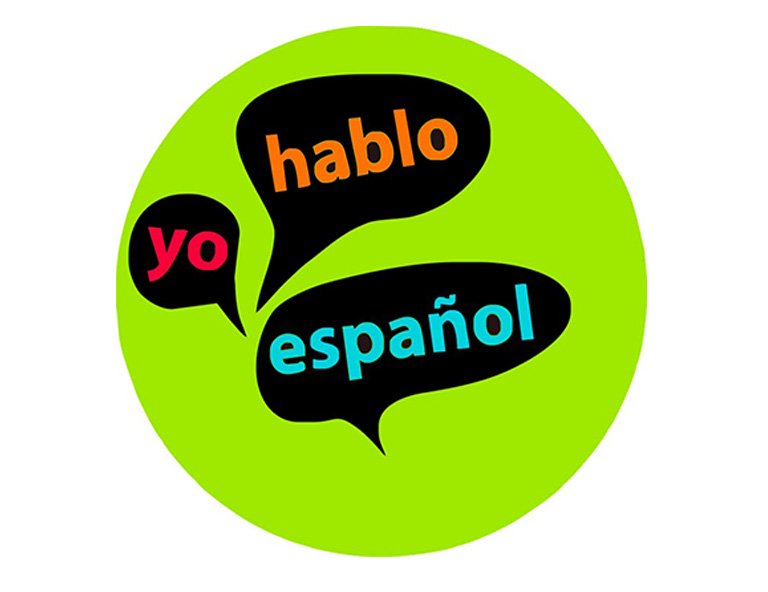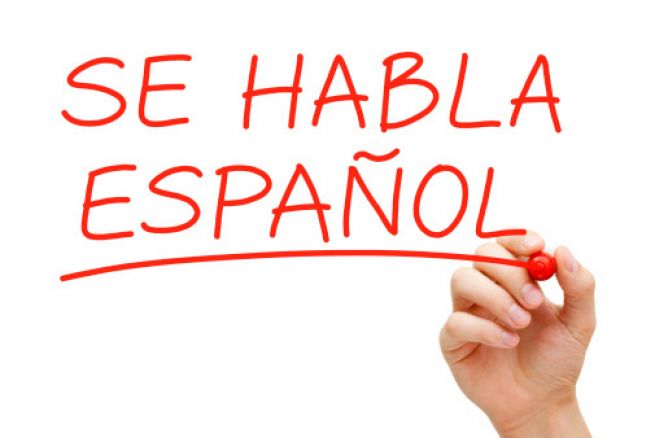Spanish is the most widely spoken of the Romance languages, both in terms of number of speakers and the number of countries in which it is the dominant language. Besides being spoken in Spain, it is the official language of all the South American countries except Brazil and Guyana, of the six republics of Central America, as well as of Mexico, Cuba, the Dominican Republic, and Puerto Rico. Additionally, it is spoken in parts of Morocco and the west coast of Africa, and also in Equatorial Guinea. In the United States it is widely spoken in Texas, New Mexico, Arizona, and California (in New Mexico it is co-official with English), in New York City by the large Puerto Rican population, and more recently in southern Florida by people who have arrived from Cuba. A variety of Spanish known as Ladino is spoken in Turkey and Israel by descendants of Jews who were expelled from Spain in 1492. All told there are about 350 million speakers of Spanish.
Pronunciation and usage of Spanish naturally vary between countries, but regional differences are not so great as to make the language unintelligible to speakers from different areas. The purest form of Spanish is known as Castilian, originally one of the dialects that developed from Latin after the Roman conquest of Hispania in the 3rd century A.D. After the disintegration of the Roman Empire, Spain was overrun by the Visigoths, and in the 8th century the Arabic-speaking Moors conquered all but the northernmost part of the peninsula. In the Christian reconquest, Castile, an independent kingdom, took the initiative and by the time of the unification of Spain in the 15th century, Castilian had become the dominant dialect. In the years that followed, Castilian, now Spanish, became the language of a vast empire in the New World.
Spanish vocabulary is basically of Latin origin, though many of the words differ markedly from their counterparts in French and Italian. Many words beginning with f in other Romance languages begin with h in Spanish (e.g., hijo-son, hilo-thread). The Moorish influence is seen in the many words beginning with al- (algodón-cotton, alfombra-rug, almohada-pillow, alfiler-pin). As in British and American English, there are differences in vocabulary on the two sides of the ocean (also in mainland Spain).
Spanish is spoken/used in the following countries: Argentina, Aruba (Dutch), Belize (British Honduras), Bolivia, Chile, Colombia, Costa Rica, Cuba, Dominican Republic, Ecuador, El Salvador, Equatorial Guinea, Galapagos Islands (Ecuador), Gibraltar (U.K.), Guatemala, Honduras, Mexico, Morocco, Nicaragua, Panama, Paraguay, Peru, Puerto Rico (U.S.), Spain, St. Kitts (& Nevis) Independent, United States of America, Uruguay, Venezuela, Virgin Islands (U.S.).
Language Family
Family: Indo-European
Subgroup: Romance
Question and exclamation marks: In Spanish there are opening question and exclamation marks, ¿ and ¡, which can appear right at the beginning or in the middle of a sentence.
Measurements: Metric are the only official measurements. Imperial measurements must be converted into metric. However, there are some instances of the use of inches, such as in screen sizes.
Time: Spain uses the 24-hour clock, i.e. 10.00 / 15.00.
Date: The format is 25/08/99 or 25-08-99. Spanish uses a decimal comma (3,7%), and a dot after 999 (16.000).
Gender: Spanish has masculine and feminine genders. The gender affects nouns, adjectives, demonstratives, possessives and articles, but not verbs, e.g. Está cansada (She’s tired), Está cansado (He’s tired).
Plurals: Generally speaking, the plural is formed by adding ‘s’ to words ending in a vowel and by adding ‘-os’ or ‘-es’ to words ending in a consonant. This is however, governed by a set of rules.
One letter words: One letter words include: a, e (replaces ‘y’ (= and) before a word beginning with ‘i’), o, u (replaces ‘o’ (= or) before a word beginning with an ‘o’).
Capitalization: Occurs at the beginning of sentences and for proper names. Unlike English, days of the week/months of the year/languages/nationalities/managerial posts like gerente general, do not take a capital letter.
Double consonants: The only groups of two equal consonants are the following: cc, ll, nn, rr.
End-of-line hyphenation: With regard to end-of-line hyphenation, it is best to leave words whole in normal text and leave hyphenation for restricted text boxes, columns, etc. However, if absolutely necessary, a single consonant between two vowels joins the second. Hyphenation between two consonants applies. Examples: in-novador, ten-síon, ac-ceso. However, there are exceptions in the case of the following groups: pr, pl, br, bl, fr, fl, tr, dr, cr, cl, gr, rr, ll, ch (e.g., ca-ble, ma-cro, I-rracional). Between three consonants, the first two will go with the preceding vowel and the third with the following vowel (e.g., trans-por-te), except in the case of the aforementioned consonant groups, in which the first one will go with the preceding vowel and the third with the following vowel (e.g., im-presora, des-truir).
Avoid hyphenation: Between two vowels. When the result will appear rude (e.g., dis -puta, tor-pedo). It is advised that the last line in a paragraph contains more than four characters (punctuation marks included).
Tú and Usted: The familiar form of you is tú and verbs used with tú are conjugated in the 2nd person. The formal form of you is usted and verbs used with usted are conjugated in the 3rd person. The familiar form is used with friends or with people who are younger than you. The formal form is used when you speak Spanish with elders or people you don’t know.
Ser vs Estar: Two verbs in Spanish express “to be”: ser, and estar. In general, “ser” expresses permanent states, such as Soy alto (I am tall) or Somos de Argentina (We are from Argentina). Estar expresses temporary conditions, such as Estoy cansado (I am tired) or La calle está mojada (The street is wet).












